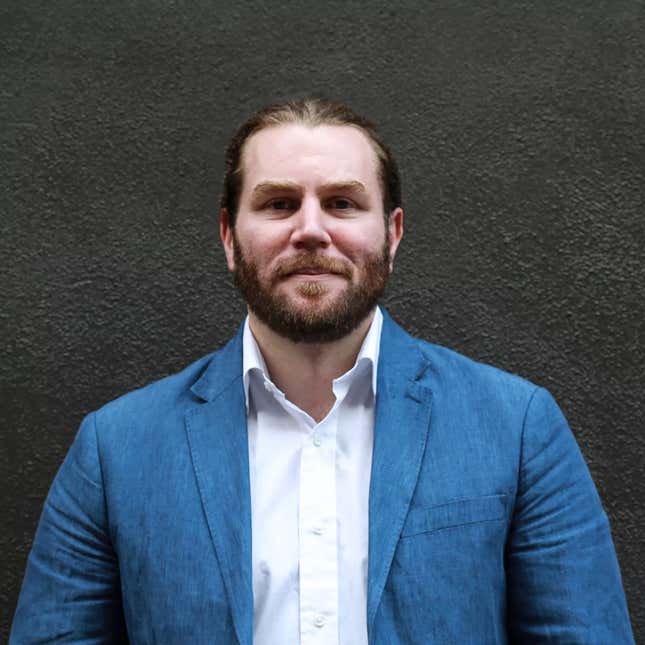America’s biggest banks are used by hundreds of millions of people. A digital startup bank is hoping to challenge these incumbents by scooping up the next generation of customers before the titans can get to them.
Four-year-old Current has a long way to go before it catches up to, say, Citigroup, but the demographics of its customer base have attracted venture capitalists’ attention. The average age of the New York-based bank’s users is 27, and about 50% of its customers are in their teens. By comparison, the average age of customers using traditional banks is around 53.
“We really drop off after age 35,” said Stuart Sopp, 42, the company’s CEO and founder. “If you’re a Gen X like me, you’re not downloading our app. You’ve already made your banking choice.” Current has about 450,000 open accounts since it went live two years ago, and its founder says it’s growing 50% from one quarter to the next.
Current is part of a wave of digital banks—sometimes known as neobanks—that are sprouting around the world. Entrepreneurs have figured out that they can build a banking app paired with a debit card that’s much more slick and easy to use than the online interfaces run by many traditional banks. These branch-free digital banks save a load of money on the overhead required for a branch network.
Some of the fastest-growing upstarts, like Monzo and Revolut, are based in the UK and are expanding quickly around the world. The British neobanks are forecast to acquire 35 million new customers globally within the next 12 months, according to Accenture. Many of the new breed financial startups are burning through investor money to win over as many new customers as possible. The race is on to reach scale before the money runs out.
From Wall Street to teen banking
Sopp, an aeronautical engineer by training, was a currency trader for top-tier banks like Morgan Stanley and Citigroup in his previous life. Much of his career was during the pre-crisis era when quants were packaging subprime American mortgages into securities that Wall Street banks could sell around the world, generating blockbuster profits in the process.

Sopp left Wall Street in 2014, but he still sounds like a trader, throwing out references to things like asset price inflation and volatility. By the time he left, trading wasn’t what it used to be. Much of it was automated, and years of aggressive stimulus by major central banks had dried up the price swings, or volatility, of financial assets that traders rely on to make money. Global banks have spent much of the past decade trying figure out how to rejigger their businesses as a result.
“It made sense to have a career pivot,” Sopp said.
In a manner of speaking, the flow of monetary policy carried him from Wall Street to fintech. As interest rates have plunged, investors around the world have been in a desperate search for higher returns. Much of that money has flowed into venture capital firms that invest in private companies in Silicon Valley, New York, and London. “The pensions are taking a phenomenal amount of risk, and a lot of that comes through the VC world,” Sopp said. “The competitors are getting funded to compete with the banks, and the banks are struggling.”
Online parenting
Parents already have banking options for their kids. Many major banks have accounts for teenagers, and parents can also give their children a pre-paid debit card if they need a way to make digital payments. Current’s pitch is that it’s easy to sign up online, and that it has a richer set of features than other teen accounts, with thing like notifications for spending, and ways to compartmentalize money and assign chores. The company uses Choice Bank and Metropolitan Commercial Bank, its partner banks, to offer its services.
It also has merchant and brand blocking, so parents can control where, and how much, their kids spend. Sopp says Current is meant to be flexible so that multiple parents, godparents, and others who are helping to raise a kid can tie into it. “It takes a village,” he said. “Families are more complicated than the 1950s nuclear family on TV.”
The company’s CEO says Current is expanding as its first generation of customers gets older. It launched a full checking account earlier this year, which Sopp says is a basic account with no minimum balances or overdrafts. He says the checking service is growing faster because it’s a bigger market.
The next generation
American banks can’t refuse customers who want an account, but they can effectively drive them away by charging fees and requiring minimum balances. They do that because customers who don’t have much money can be a drain on traditional banks, which are less automated and also maintain physical branches that come with added property, cash-handling, and personnel costs. The operating expenses for digital banks in the UK can be as little as £20 per customer, compared with more than £170 for incumbents, according to Accenture.
As interest rates drift closer to zero, lenders are also making less profit on the spread between deposit rates and lending rates (the net interest margin), which has long been a core money maker.
Startup entrepreneurs are betting they can reconfigure that business model by building online-only systems that are hosted on the cloud. The newcomers make some income on credit- and debit-card transactions (interchange fees paid by merchants) and some, like Current, offer a premium service that includes extra services like early payroll for its checking accounts.
Instead of relying on net interest income, the upstarts are experimenting with other ways of monetizing customers, such as acting as a broker for third-party financial services that are available on their platform, like travel and mobile phone insurance. Starling, started by Anne Boden, a former Royal Bank of Scotland executive, sells its banking software to other financial institutions and is going into small business lending. Boden says her company will be profitable next year.
Growth at all costs?
Other banking startups are, for now, more concerned with attracting new customers than making money. An N26 executive told the Financial Times (paywall) that profitability isn’t a “core metric.”
These companies point to their low cost bases and argue that they could already be profitable on a per-customer basis if they dialed back their marketing spending. But this should be little reassurance for the VC firms that have bankrolled the startups. Their multibillion-dollar valuations are based on serving many millions of customers. If they switch off the advertising campaigns, their valuations are likely to wither as well.
Former Barclays CEO Antony Jenkins says neobanks are already a success because they have shown there is a market for a different kind of banking experience. The trouble for the upstarts is that they’re spending as much as £300 to acquire a new customer. He argues that it’s cheaper to upgrade an existing bank’s tech than it is to start from scratch.
“For a lot less money you could create significant economic value,” Jenkins said in an interview with Quartz. In 2016, he founded 10x Future Technologies, which sells cloud-based computing platforms to banks.
Sopp, like other neobank founders, disagrees, and thinks banks are structurally incapable of servicing customers for a lower cost. The coming years will demonstrate which side is correct. In the meantime, Sopp says he’s not following the acquire-customers-now, make-money-later playbook. He says Current will be “cash flow positive” in 2020.
Sopp said it’s “dangerous” for companies to set out with only a vague plan for future profitability. “The DNA of a company is set fairly early on, and if it’s growth only, you’ll probably struggle to monetize later.”
